Table of Contents
- Pricing Strategy
- Pricing Analysis
- Types of Pricing Strategies
- Pricing Strategy Examples
- Cost, Margin, & Markup in Pricing
- How to Create a Pricing Strategy
- Pricing Models
- Pricing Models Based on Industry or Business
Pricing Strategy
A pricing strategy establishes the best price for a product or service. The optimal strategy results in steady sales and keeps customers coming back.
Key components of pricing strategies include:
- Revenue goals
- Marketing objectives
- Target audience
- Brand positioning
- Product attribute.
Strategies are also influenced by external factors like consumer demand, competitor pricing, and overall market trends.
Before I talk about pricing strategies, let’s review an important pricing concept that will apply regardless of what strategies you use.
Price Elasticity of Demand
Price elasticity of demand determines how a change in price affects consumer demand.
If consumers still purchase a product despite a price increase, its demand is inelastic. Fuel is a good example. I rely on my car to get me from point A to point B, and my car needs fuel to run. Even when gas gets more expensive, I pay the price.
If price changes significantly impact purchasing decisions, demand is elastic. Consider streaming TV and movie services — more than half of consumers say they’ve canceled a streaming service due to price hikes.
Unitary elastic demand occurs when the percentage change in quantity demanded is exactly equal to the percentage change in price.
You can calculate price elasticity using this formula:
% Change in Quantity ÷ % Change in Price = Price Elasticity of Demand
The concept of price elasticity helps you understand whether your product or service is sensitive to price fluctuations and to what degree.
Pricing Analysis
Pricing analysis is the process of evaluating your current pricing strategy against market demand. The goal of a pricing analysis is to identify opportunities for pricing changes and improvements.
You typically conduct a pricing analysis when considering new product ideas, developing your positioning strategy, or running marketing tests. I’d also recommend running a price analysis once every year to evaluate your pricing against market competitors and consumer expectations.
How to Conduct a Pricing Analysis
Here’s a step-by-step guide to help you through the price analysis process.
1. Determine the true cost of your product or service.
To calculate the true cost of a product or service, first calculate all your expenses, including fixed and variable costs. Rental or lease payments, insurance, and property taxes are examples of fixed costs. Variable costs include materials, labor, and logistics.
Once you’ve determined these costs, subtract them from the price of your product or service.
True cost = Sales price – (fixed + variable costs)
For example, if the sales price of your product is $10, your fixed costs are $5, and your variable costs are (currently) $3, your total cost is $2. This means you make $2 for every product sold. If, however, your fixed costs are $7 and your variable costs are $4, you’re losing a dollar on every sale.
2. Understand how your target market and customer base.
In my experience, surveys, focus groups, or questionnaires can help determine how the market responds to your pricing model. You get a glimpse into what your target customers value and how much they’re willing to pay for the value your product or service provides.
3. Analyze competitor prices.
There are two types of competitors to consider when conducting a pricing analysis: direct and indirect.
Direct competitors sell the exact same product that you sell. These types of competitors are likely to compete on price, so they should be a priority to review in your pricing analysis.
Indirect competitors are those who sell alternative products that are comparable to what you sell. If a customer is looking for your product but it’s out of stock or out of their price range, they may go to an indirect competitor to get a similar product.
I suggest creating a competitive analysis chart to visualize how your pricing compares to competitors and identify any gaps or opportunities.
4. Review any legal or ethical constraints to cost and price.
There’s a fine line between competing on price and falling into legal and ethical trouble. For example, you need to understand price-fixing and predatory pricing.
Pricing fixing happens when multiple companies collaborate to set the price of identical items, in turn eliminating competition. Predatory pricing occurs when one company sets unrealistically low price points for products to corner the market. Both practices violate American antitrust laws.
Cost, Margin, & Markup in Pricing
Understanding the role of cost, margin, and markup is also essential when choosing a pricing strategy, especially if you want your pricing to be cost-based.
Cost
Cost refers to the fees you incur from manufacturing, sourcing, or creating the product you sell. They include materials, the cost of labor, fees paid to suppliers, and any losses incurred. Cost does not include overhead and operational expenses such as marketing, advertising, maintenance, or bills.
Margin
Margin, also called profit margin, is the difference between the selling price of a product and its cost, expressed as a percentage of the selling price. It shows you the profitability of your product.
There are two types of margins:
- Gross margin. This is calculated as (Sales Price – Cost of Goods Sold) / Sales Price x 100. It reflects the profitability before accounting for operating expenses.
- Net margin. This is calculated as (Net Profit / Sales Price) x 100. It includes all expenses, providing a more comprehensive view of profitability.
Consider a product sold for $120 that costs $70 to produce:
Gross Margin = (120 − 70) / 120 x 100 = 41.6%
To calculate net profit, subtract any additional expenses from your gross profit, such as operating costs or taxes. In the example above, our gross profit is $50 (120 - 70). If operating costs are $20 and taxes are $10, our net profit is $40. (70 - 20 -10). Now, we can calculate our net margin.
Net Margin = (40 / 120) x 100 = 33.3%
Markup
Markup refers to the additional amount you charge for your product over the production and manufacturing fees. It allows you to set prices that align with market expectations and your business goals.
For example, if a product costs $70 to produce and you sell it for $100, the markup is $30, or approximately 42.9% of the cost price.
Now, I’ll walk you through some common pricing strategies. It’’s important to note that these aren’t necessarily standalone strategies — many can be combined when setting prices for your products and services.
Types of Pricing Strategies
- Competition-Based Pricing
- Cost-Plus Pricing
- Dynamic Pricing
- High-Low Pricing
- Penetration Pricing
- Skimming Pricing
- Value-Based Pricing
- Psychological Pricing
- Geographic Pricing
1. Competition-Based Pricing Strategy
Competition-based pricing is also known as competitive pricing or competitor-based pricing. This pricing strategy focuses on a company‘s product or service’s existing market rate (or going rate). It doesn’t consider the cost of its product or consumer demand.
Instead, a competition-based pricing strategy uses the competitors’ prices as a benchmark. Businesses that compete in a highly saturated space may choose this strategy since a slight price difference may be the deciding factor for customers.
With competition-based pricing, you can price your products slightly below your competition, the same as your competition, or slightly above your competition.
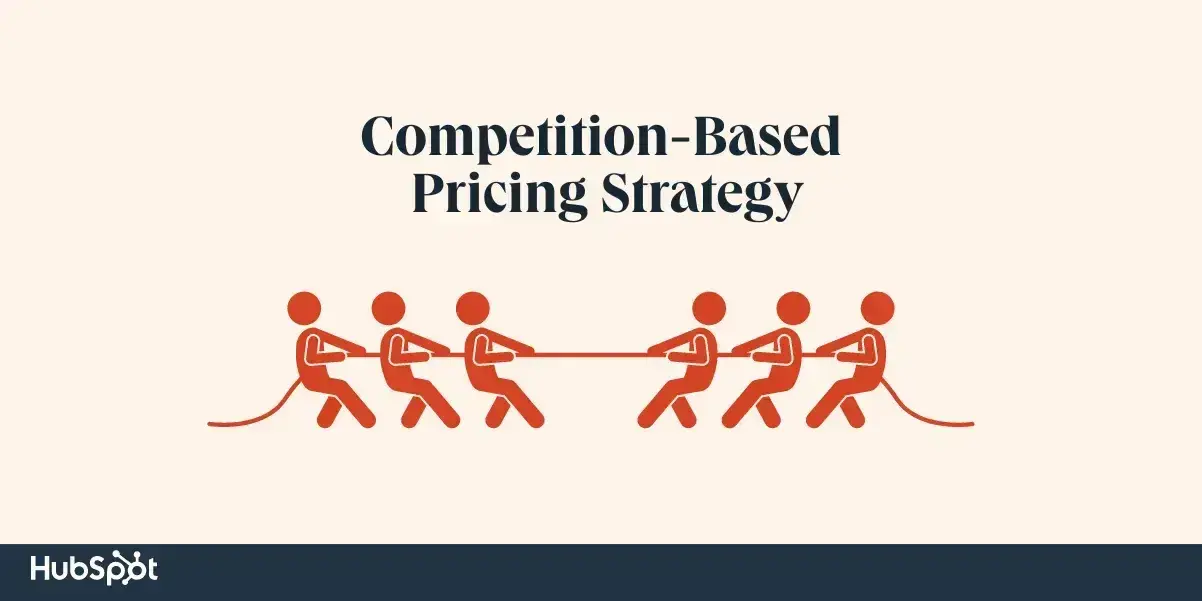
For example, if I sell marketing automation software, and my competitors’ prices range from $19.99 per month to $29.99 per month, I could set my price at $18.99 on the low end, $30.99 on the high end, or $24.99 if I want to stay in the middle.
I think a great example of a competitive pricing model is Amazon. The company uses automated repricing tools that constantly monitor competitor prices and adjust their prices accordingly. This strategy ensures Amazon’s prices are always competitive, often making them the lowest-priced option in the market.
When to use: Use competition-based strategies to capture consumer attention in saturated markets.
Competition-Based Pricing Strategy in Marketing
The approach has helped Amazon attract price-sensitive customers and maintain its ecommerce dominance. Consumers seek the best value, which isn’t always the lowest price. Competitive pricing can help your brand attract customers, especially if your marketing teams can offer something unique like exceptional customer service, a generous return policy, or exclusive loyalty benefits.
|
Advantages |
Disadvantages |
|
|
2. Cost-Plus Pricing Strategy
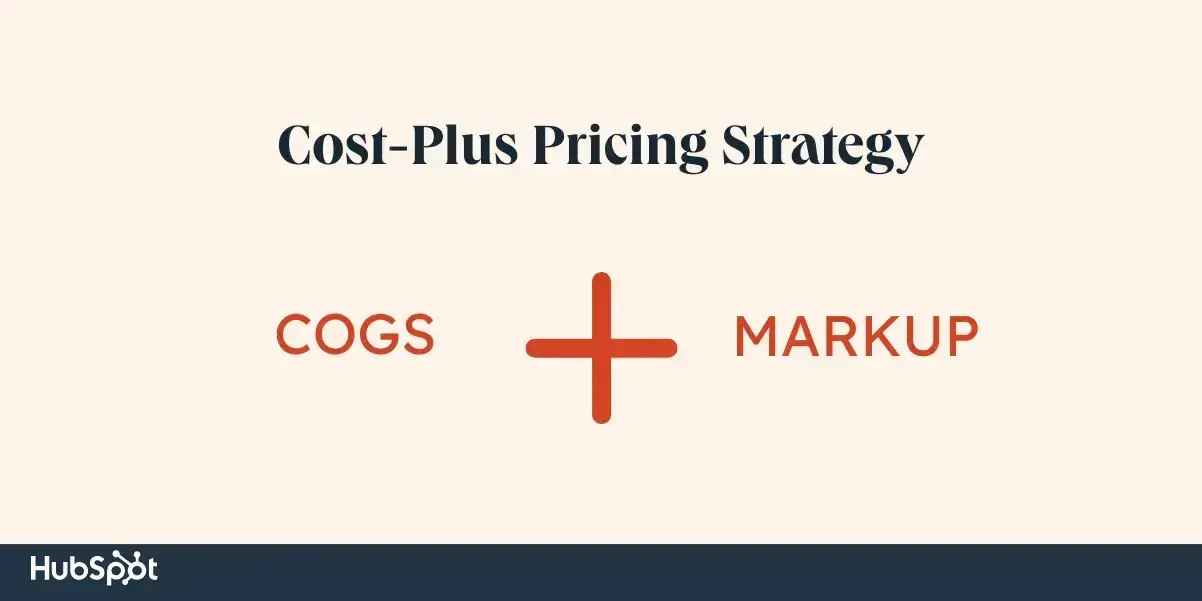
A cost-plus pricing strategy (also known as markup pricing) focuses solely on the cost of producing your product or service or your cost of goods sold (COGS).
To apply the cost-plus method, you add a fixed percentage to your product production cost.
The formula is:
Selling Price = Cost Price x (Cost Price + Markup Percentage)
For example, let’s say you sell shoes. The total cost to produce one pair of shoes is $55. If you want to apply a 50% markup, the calculation would be:
Selling Price = $55 × (1 + 0.50) = $55 × 1.50 = $82.50
Cost-plus pricing is typically used by retailers who sell physical products. This strategy isn’t the best fit for service-based or SaaS companies as their products typically offer far greater value than the cost to create them.
When to use: Use cost-plus pricing when your competition is using the same model.
Cost-Plus Pricing Strategy in Marketing
If you’re using a cost-plus approach, focus on marketing the value of your goods compared to competitors, not the price. For example, your product might include features or add-ons that other brands do not.
|
Advantages |
Disadvantages |
|
|
3. Dynamic Pricing Strategy
Dynamic pricing strategy is also known as surge pricing, demand pricing, or time-based pricing. It involves adjusting prices in real time based on factors such as market demand, competitor prices, and other external conditions.
In my experience, this flexible approach helps maximize revenue and maintain competitiveness.
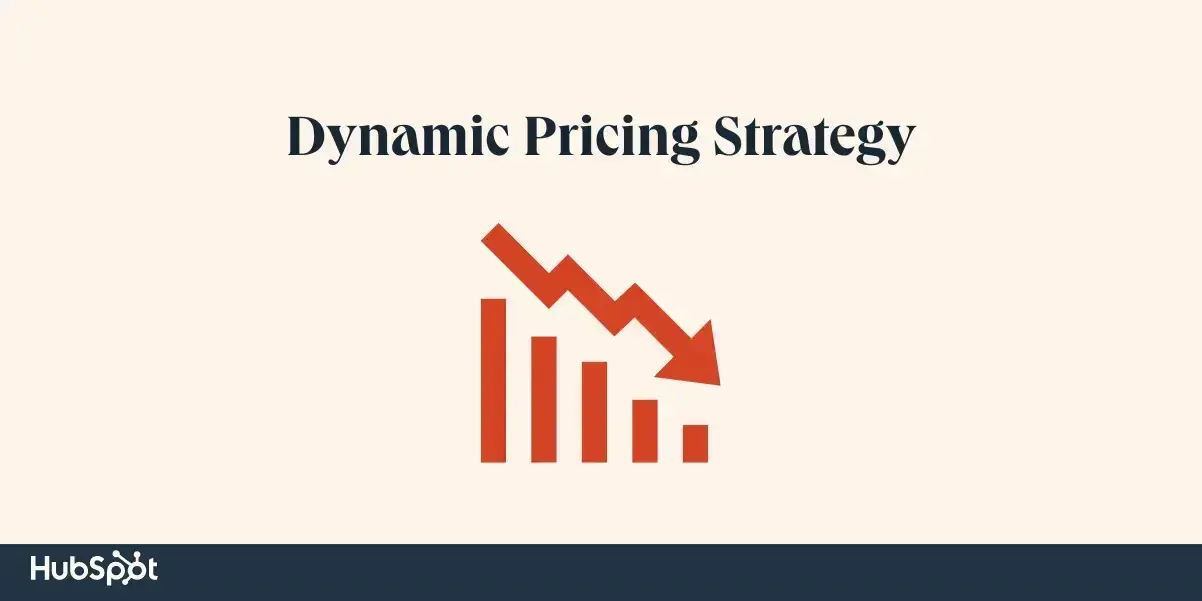
Hotels, airlines, event venues, and utility companies use dynamic pricing by applying algorithms that consider competitor pricing, demand, and other relevant factors. These algorithms allow companies to shift prices to match what the customer is willing to pay at the exact moment they’re ready to make a purchase.
There is no single formula for dynamic pricing as it involves complex algorithms, but a basic version can be represented as:
Selling Price = Base Price + (Demand Factor × Base Price)
Let’s say your product costs $20. Research shows that consumer demand is up 30%.
Selling Price = 20 + (0.30 x 20) = 20 + 6 = $26.
A great example of a company that uses a dynamic pricing model is Uber. During peak hours or high-demand situations (e.g., Friday nights, bad weather), Uber’s algorithms monitor the number of ride requests, and if the demand exceeds the supply of available drivers, it temporarily increases the ride prices.
When to use: Use dynamic pricing when your product or service is in high demand, and when there aren’t many viable competitors operating in the same space.
Dynamic Pricing Strategy in Marketing
Dynamic pricing can help keep your marketing plans on track. Your team can plan for promotions in advance and configure the pricing algorithm you use to launch the promotion price at the perfect time. You can even A/B test dynamic pricing in real time to maximize your profits.
|
Advantages |
Disadvantages |
|
|
4. High-Low Pricing Strategy
A high-low pricing strategy starts with high product sales prices that fall when the product loses novelty or relevance.
Discounts, clearance sections, and year-end sales are examples of high-low pricing in action, which is why this strategy may also be called a discount pricing strategy.
This approach aims to capture different segments of the market, starting with customers willing to pay a premium and later attracting more price-sensitive shoppers as the price drops.
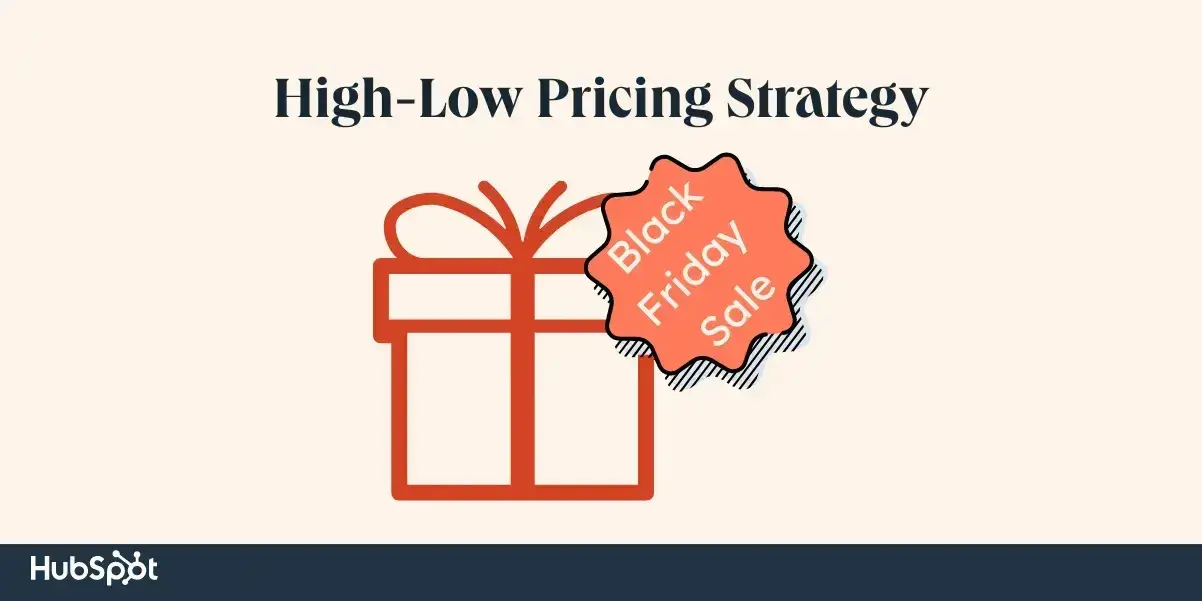
High-low pricing is commonly used by retail firms that sell seasonal items or products that change often, such as clothing, decor, and furniture.
For example, in 2023, Nike used the high-low pricing strategy for its Court Legacy sneaker. Initially, the shoe was sold at a high price to attract customers eager for the latest release.
As demand decreased and new models came out, Nike lowered the price through promotions and discounts. This strategy helped Nike manage inventory and attract a broader customer base, including price-sensitive shoppers who waited for discounts. Now, the shoe is no longer sold by Nike directly but can be found on reseller websites for a lower price.
When to use: Use high-low pricing for products with high initial demand, such as special editions or limited-time offers. As demand falls, lower the price accordingly.
High-Low Pricing Strategy in Marketing
If you want to keep the foot traffic steady in your stores year-round, a high-low pricing strategy can help. By evaluating the popularity of your products during particular periods throughout the year, you can leverage low pricing to increase sales during traditionally slow months.
|
Advantages |
Disadvantages |
|
|
5. Penetration Pricing Strategy
Penetration pricing strategy involves setting a low initial price for a new product to attract customers and gain market share quickly. Once the product gains traction, the price is gradually increased.
In my experience, this pricing method works best for brand-new businesses looking for customers or for businesses that are breaking into an existing, competitive market. The goal is to entice customers away from competitors and build a substantial customer base, with the expectation that customers will remain loyal even after prices are increased.
However, penetration pricing isn’t sustainable in the long run. It’s typically applied for a short time.
For example, when Disney+ launched its streaming service, it offered subscriptions at a lower price compared to competitors like Netflix and Amazon Prime. This initial low price attracted millions of subscribers quickly.
After building a strong subscriber base, Disney+ began increasing its subscription price in 2022. By early 2023, subscriber numbers began to drop, and have remained reliability stable since.
When to use: Use penetration pricing when your brand is just getting started. Conduct customer research to determine when you should raise prices and by how much.
Penetration Pricing Strategy in Marketing
Penetration pricing, like freemium pricing, means you won't make money immediately. However, with a valuable product or service, you can increase prices over time and grow your business. Focus on marketing the value of your products, making price a secondary consideration.
|
Advantages |
Disadvantages |
|
|
6. Skimming Pricing Strategy
A skimming pricing strategy involves setting a high initial price for a new or innovative product to maximize revenue from early adopters. Over time, the price is gradually lowered to attract more price-sensitive customers.
Skimming is different from high-low pricing in that prices are gradually lowered over time.
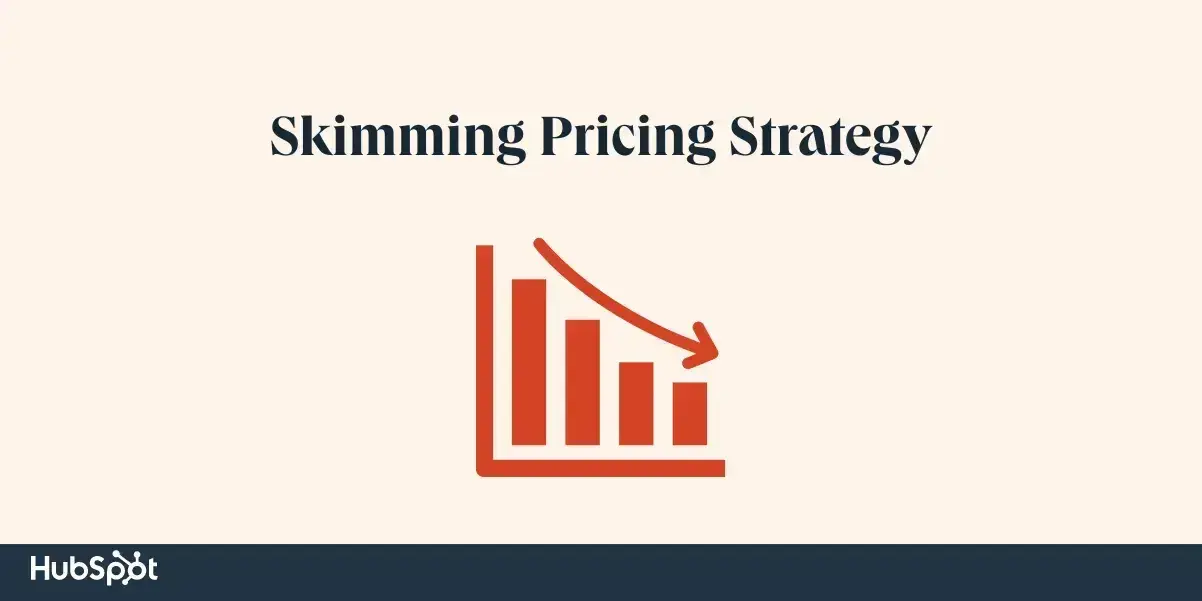
Apple uses the skimming pricing strategy effectively. When they launch a new iPhone, it is priced at a premium to target customers willing to pay more for the latest technology and features.
As newer models are introduced and initial demand decreases, Apple gradually reduces the price of the previous model. This approach helps them maximize revenue from early adopters and then attract more price-sensitive customers over time.
A skimming pricing strategy helps recover sunk costs and sell products well beyond their novelty. It’s worth noting, however, that this strategy can also annoy consumers who bought at full price and attract competitors who recognize the “fake” pricing margin as prices are lowered.
When to use: Use skimming when you have high demand for a product and when the type of product you are selling has proven value retention over time.
Skimming Pricing Strategy in Marketing
Skimming pricing works well for products with different life cycle lengths. For products with a short life cycle, you can quickly maximize profits at the start. For those with longer life cycles, you can maintain higher prices for a longer period. This strategy allows you to manage marketing efforts effectively without constantly adjusting prices.
|
Advantages |
Disadvantages |
|
|
7. Value-Based Pricing Strategy
Value-based pricing is a strategy where prices are set based on the perceived value of the product or service to the customer rather than on the cost of production or historical prices.
This approach aims to maximize revenue by aligning the price with the value customers place on the offering.
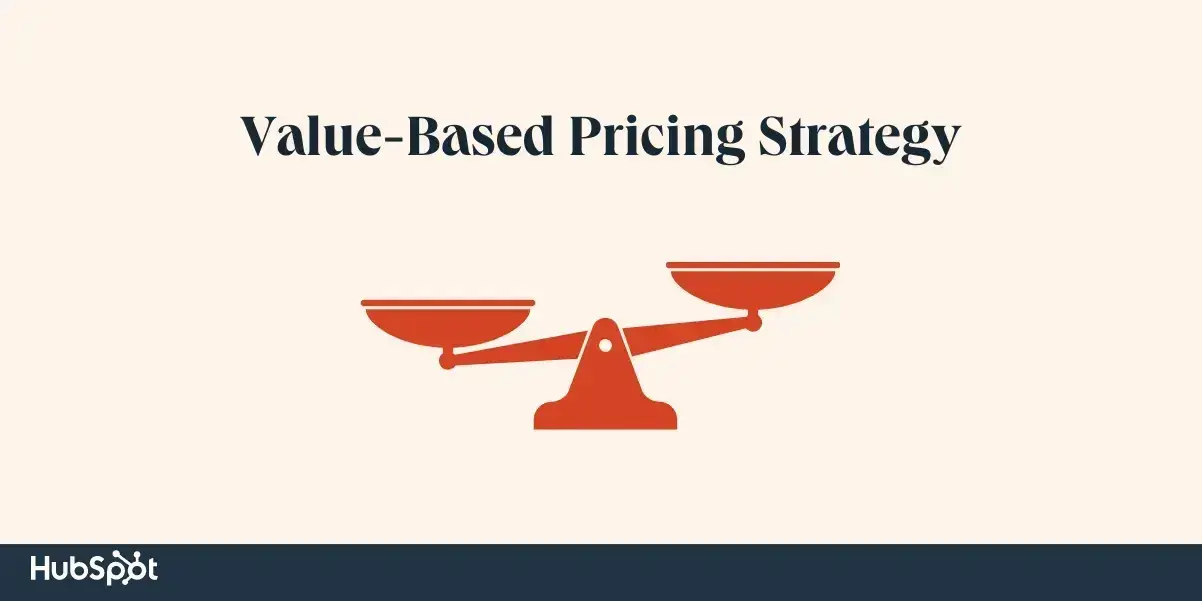
If used accurately, value-based pricing can boost your customer sentiment and loyalty. I think it can also help you prioritize your customers in other facets of your business, like marketing and service.
Tesla uses a value-based pricing strategy for its electric vehicles (EVs). This pricing reflects the perceived value of their innovative technology, sustainability, and brand prestige.
For example, the Tesla Model S is priced higher than many other EVs and luxury cars due to its high performance and advanced features. Customers are willing to pay a premium for Tesla‘s cutting-edge technology and the brand’s reputation for innovation and environmental responsibility.
When to use: Use a value-based pricing strategy when you can clearly articulate what sets your product or service apart from the competition.
Value-Based Pricing Strategy in Marketing
When marketing to customers, I recommend focusing on value to strengthen demand for your products and services. Ensure your pricing reflects what different audiences are willing to pay without using criteria that could cause issues.
|
Advantages |
Disadvantages |
|
|
8. Psychological Pricing Strategy
Psychological pricing is what it sounds like — it targets human psychology to boost your sales.
Consider the 9-digit effect. While a product that costs $99.99 is essentially $100, the one-cent change tricks our brains into thinking the price is significantly cheaper.
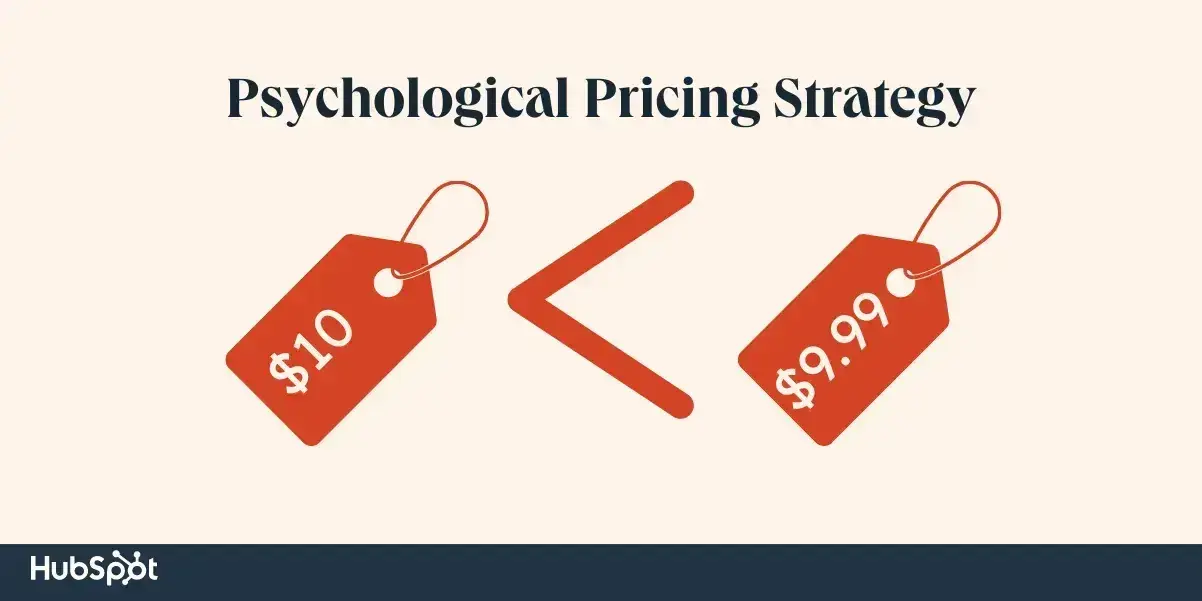
Another way to use psychological pricing would be to place a more expensive item directly next to (either in-store or online) the one you're most focused on selling. Or offer a “buy one, get one 50% off (or free)” deal that makes customers feel the circumstances are too good to pass up.
One of my favorite methods is also the simplest: Changing the font, size, or color of product pricing information can help boost sales.
Psychological Pricing Strategy in Marketing
Psychological pricing requires a deep understanding of your target market to be effective. If your customers value discounts and coupons, emphasize these in your marketing to meet their desire to save money.
On the other hand, if quality is more important to your audience, the lowest price might not attract them. Your pricing and marketing should align with what motivates your customers to pay a certain price for a product.
When to use: Use this strategy in conjunction with any other strategy to improve overall sales.
|
Advantages |
Disadvantages |
|
|
9. Geographic Pricing Strategy
Geographic pricing strategy involves setting different prices for products or services based on the geographic location of the customer.
This strategy may be used if a customer from another country is making a purchase or if there are disparities in factors like the economy or wages.
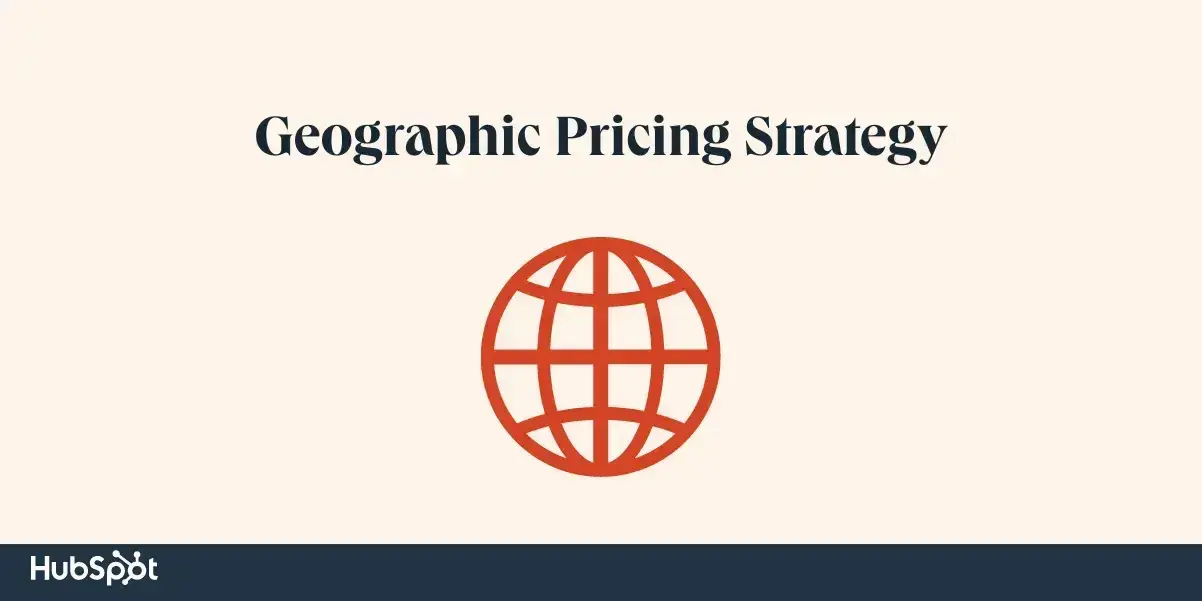
For example, Netflix uses geographic pricing to adjust subscription fees based on the region. A standard Netflix subscription costs $17.99 per month in the United States but ₹ $499 per month (about $5.71) in India to account for differences in purchasing power and local market competition.
When to use: Use this strategy when you sell the same product or service in multiple geographic markets.
Geographic Pricing Strategy in Marketing
Marketing a geographically priced product is easy with paid social media ads. You can target specific zip codes, cities, or regions at a low cost with precise results. Even if customers travel or move, your pricing model stays consistent, helping you manage marketing costs.
|
Advantages |
Disadvantages |
|
|
Pricing Strategy Examples
- Dynamic Pricing Strategy: Chicago Cubs
- Freemium Pricing Strategy: HubSpot
- Penetration Pricing Strategy: Netflix
- Premium Pricing: AWAY
- Competitive Pricing Strategy: Shopify
- Project-Based Pricing Strategy: White Label Agency
- Value-Based Pricing Strategy: INBOUND
- Bundle Pricing: Adobe Creative Cloud
- Geographic Pricing: Gasoline
Pricing models can be hard to visualize. Below, we’ve pulled together a list of examples of pricing strategies as they’ve been applied to everyday situations or businesses.
1. Dynamic Pricing Strategy: Chicago Cubs
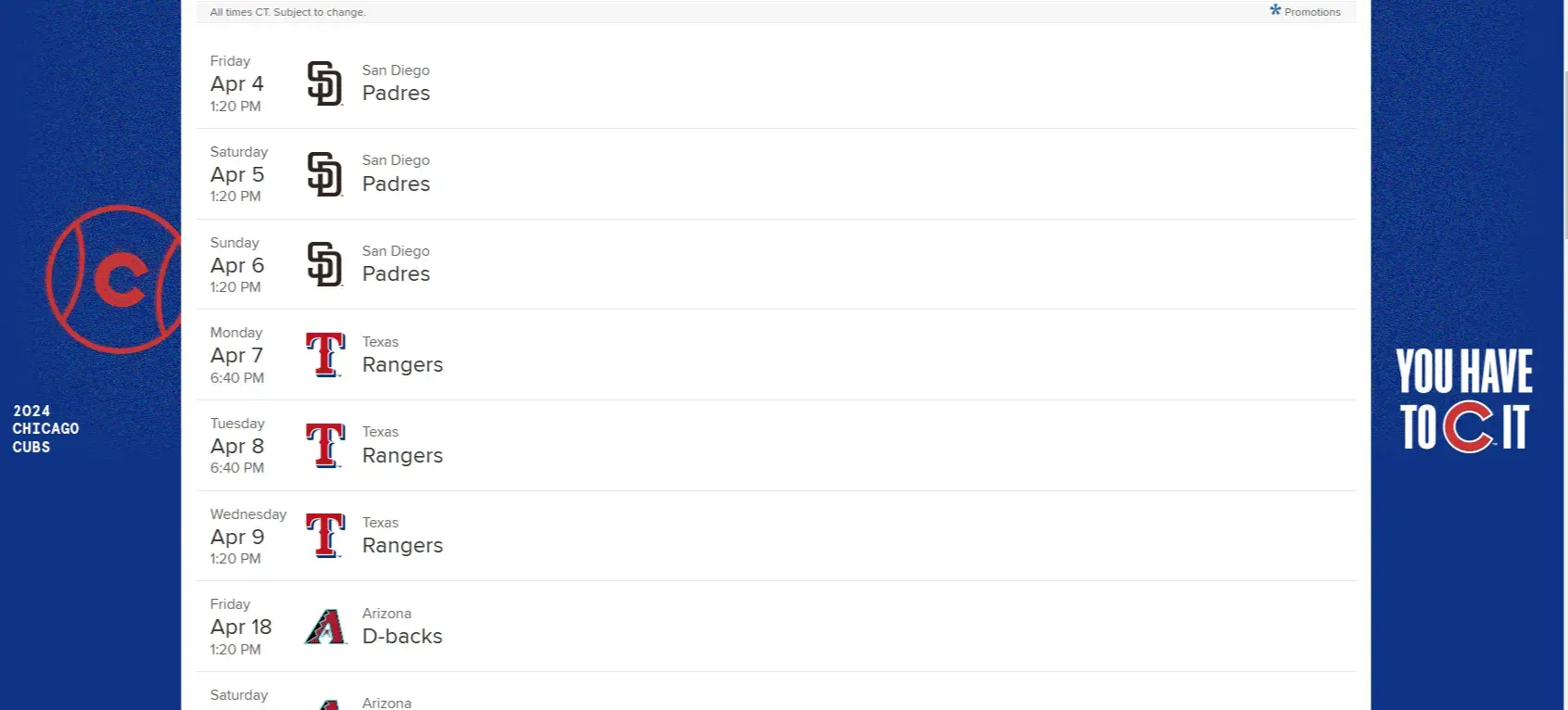
Finding tickets to a Cubs game is interesting because every time I check prices, they’ve fluctuated a bit from the last time. Purchasing tickets six weeks in advance is always a different process than purchasing them six days prior — and even more box pricing at the gate.
This is an example of dynamic pricing — pricing that varies based on market and customer demand. Prices for Cubs games are always more expensive on holidays, too, when more people are visiting the city and are likely to go to a game.
Best for: Time-sensitive events, sales, or promotions are great opportunities for implementing dynamic pricing.
2. Freemium Pricing Strategy: HubSpot
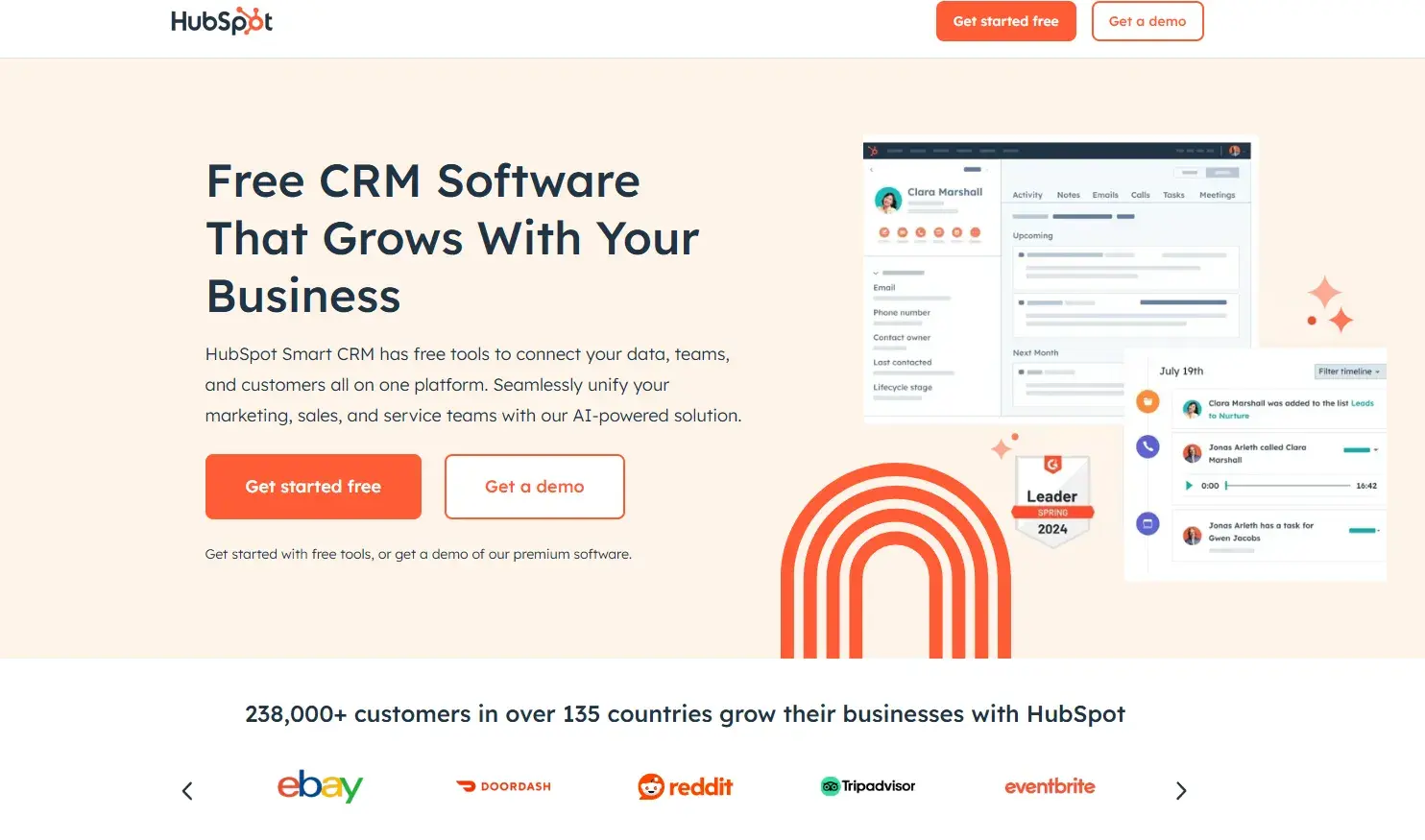
HubSpot is an example of freemium pricing at work. We offer a free version of the CRM for scaling businesses as well as paid plans for businesses using the CRM platform that need a wider range of features.
Moreover, within those marketing tools, HubSpot provides limited access to specific features. This type of pricing strategy allows customers to acquaint themselves with HubSpot and for HubSpot to establish trust with customers before asking them to pay for additional access.
What I like: Freemium pricing works super well for digital products because it gives customers a taste of the value you offer before committing.
3. Penetration Pricing Strategy: Netflix
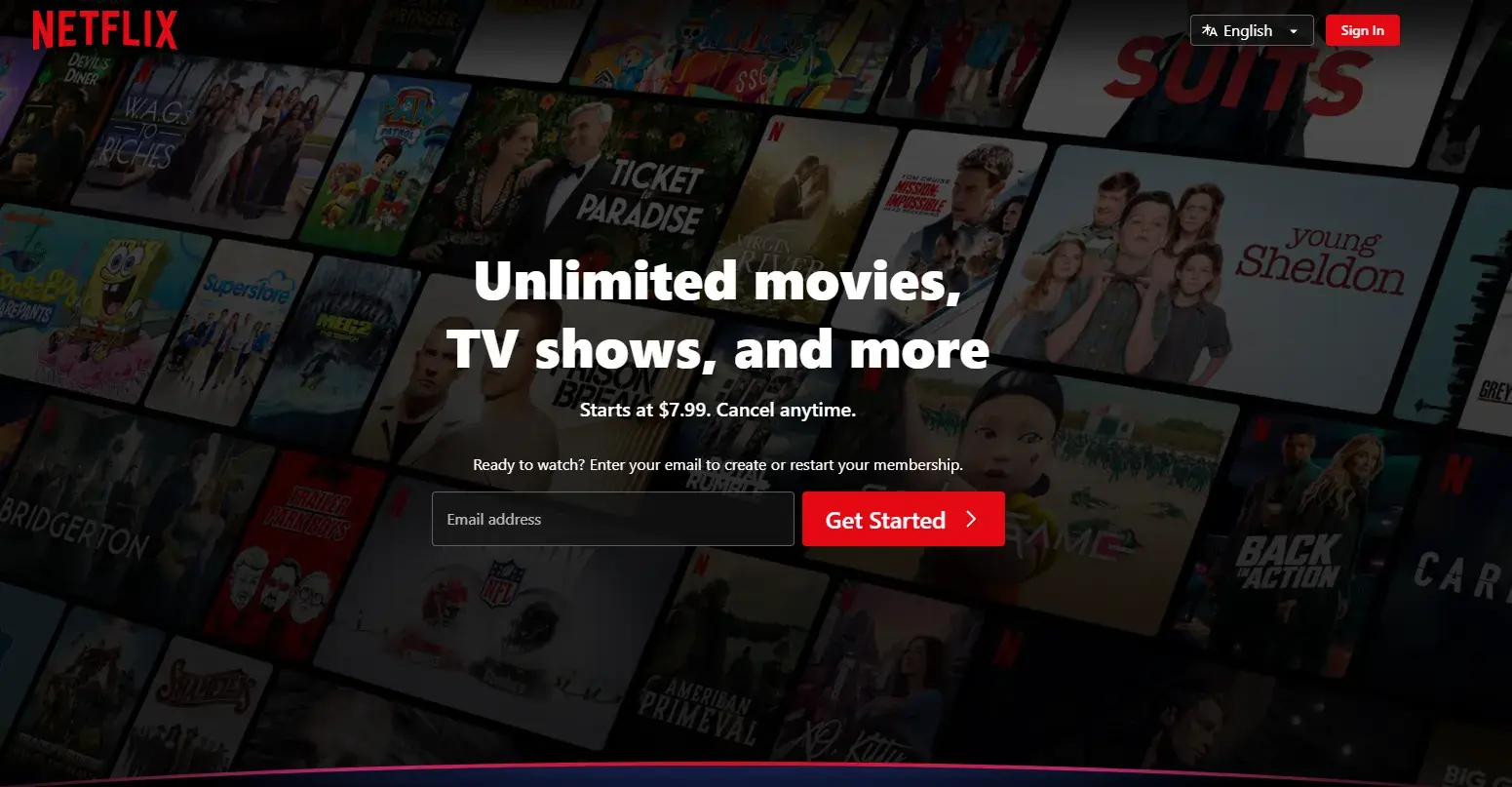
Netflix is a classic example of penetration pricing: entering the market at a low price (remember when it was $7.99?) and increasing prices over time. Since I joined a couple of years ago, I’ve seen a few price increase notices come through my inbox.
Despite their increases, Netflix continues to retain — and gain — customers. Sure, Netflix only increases their subscription fee by $1 or $2 each time, but they do so consistently. Who knows what the fees will be in five or ten years?
Pro tip: If you go with penetration pricing, be sure to be transparent about when the lower pricing changes so customers don’t churn as soon as you up the price on them. Also, be sure the value you provide is worth the higher price to customers.
4. Premium Pricing: AWAY
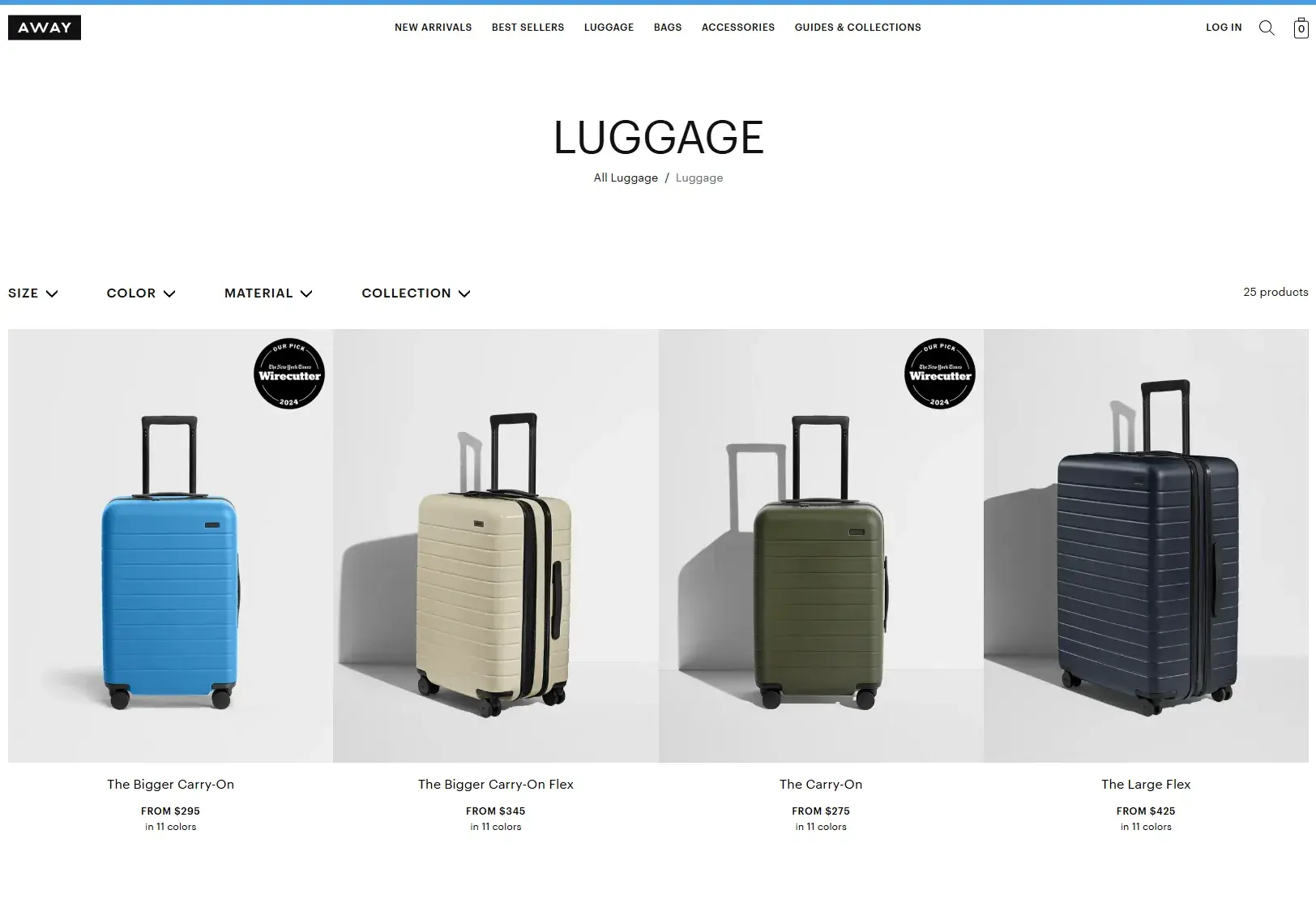
There are lots of examples of premium pricing strategies … Rolex, Tesla, Nike — you name it. One that I thought of immediately was AWAY luggage.
Does luggage need to be almost $500? I’d say no, especially since I recently purchased a two-piece Samsonite set for one-third the cost. However, AWAY has still been very successful even though they charge a high price for their luggage. This is because when you purchase AWAY, you’re purchasing an experience. The unique branding and the image AWAY portrays for customers make the value of the luggage match the purchase price.
Best for: Premium pricing is best for premium products or services, so be sure your value suits your price.
5. Competitive Pricing Strategy: Shopify
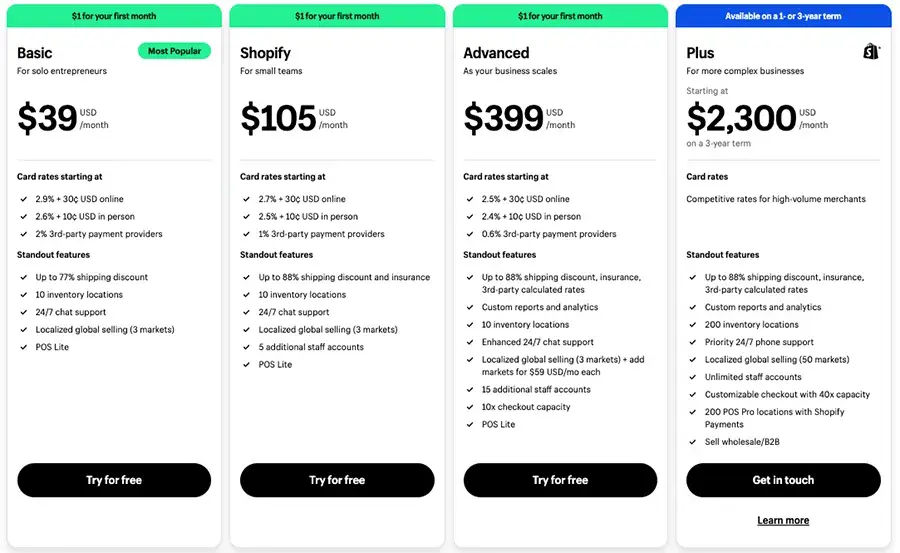
Shopify is an ecommerce platform that helps businesses manage their stores and sell their products online. Shopify — which integrates with HubSpot — has a competitive pricing strategy.
Shopify offers four versions of its product for customers to choose from, and it offers customizable and flexible features.
What I like: With these extensive options tailored to any ecommerce business's needs, the cost of Shopify is highly competitive and is often the same as or lower than other ecommerce platforms on the market today.
6. Project-Based Pricing Strategy: White Label Agency
Anyone who's been involved in building a website knows how complex and costly it can be. When I needed a new website for my business, I found that the project-based fees offered by White Label Agency were the easiest to manage.
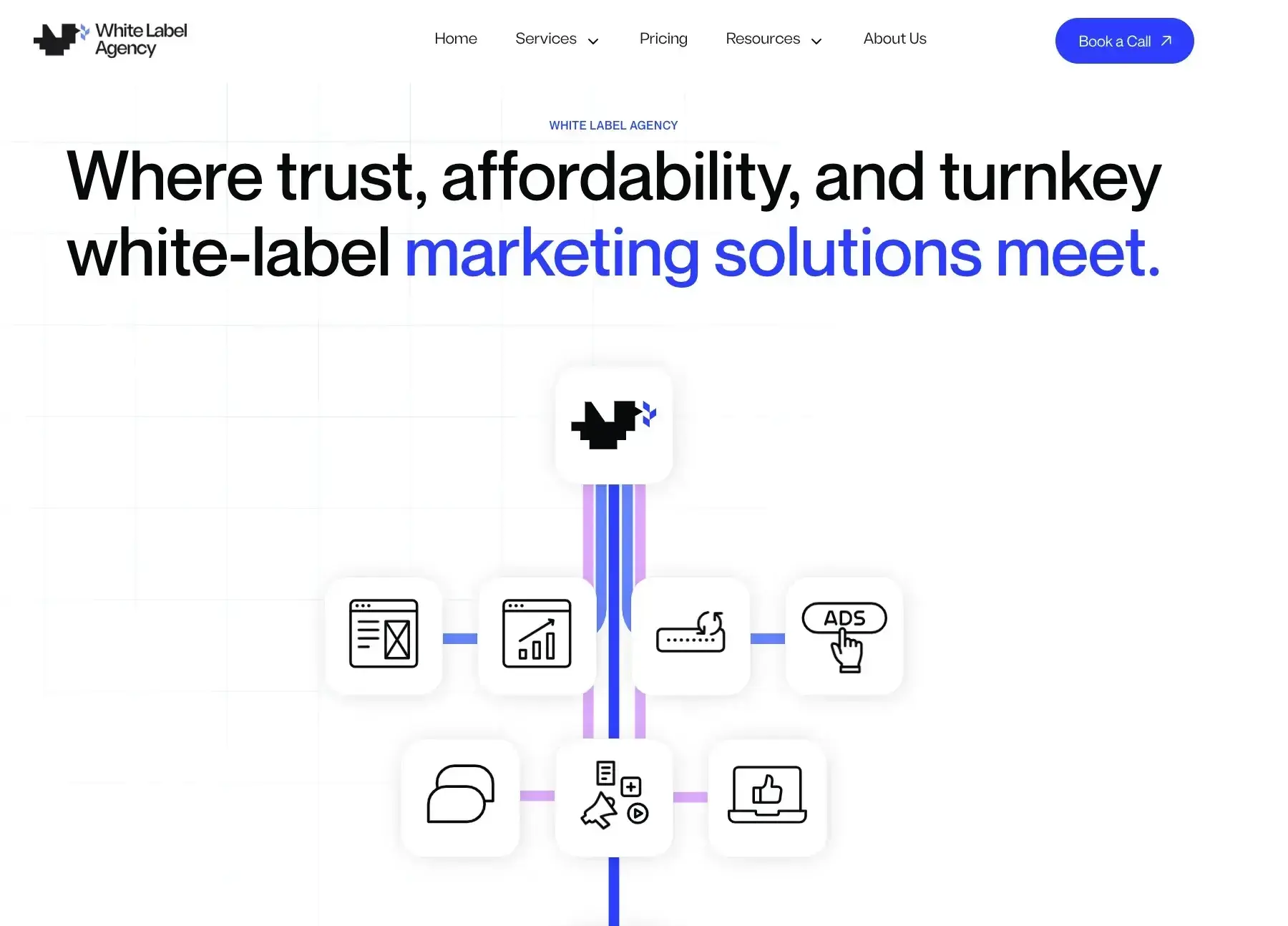
This approach focuses on the value of the outcome (e.g., a fully functional, custom-designed website) rather than the time spent on individual tasks.
What I like: Project-based pricing allows White Label Agency to provide clear, upfront pricing to their clients, ensuring transparency and trust. This strategy helps them manage project scope effectively, focus on delivering high-quality work, and maintain profitability.
7. Value-Based Pricing Strategy: INBOUND
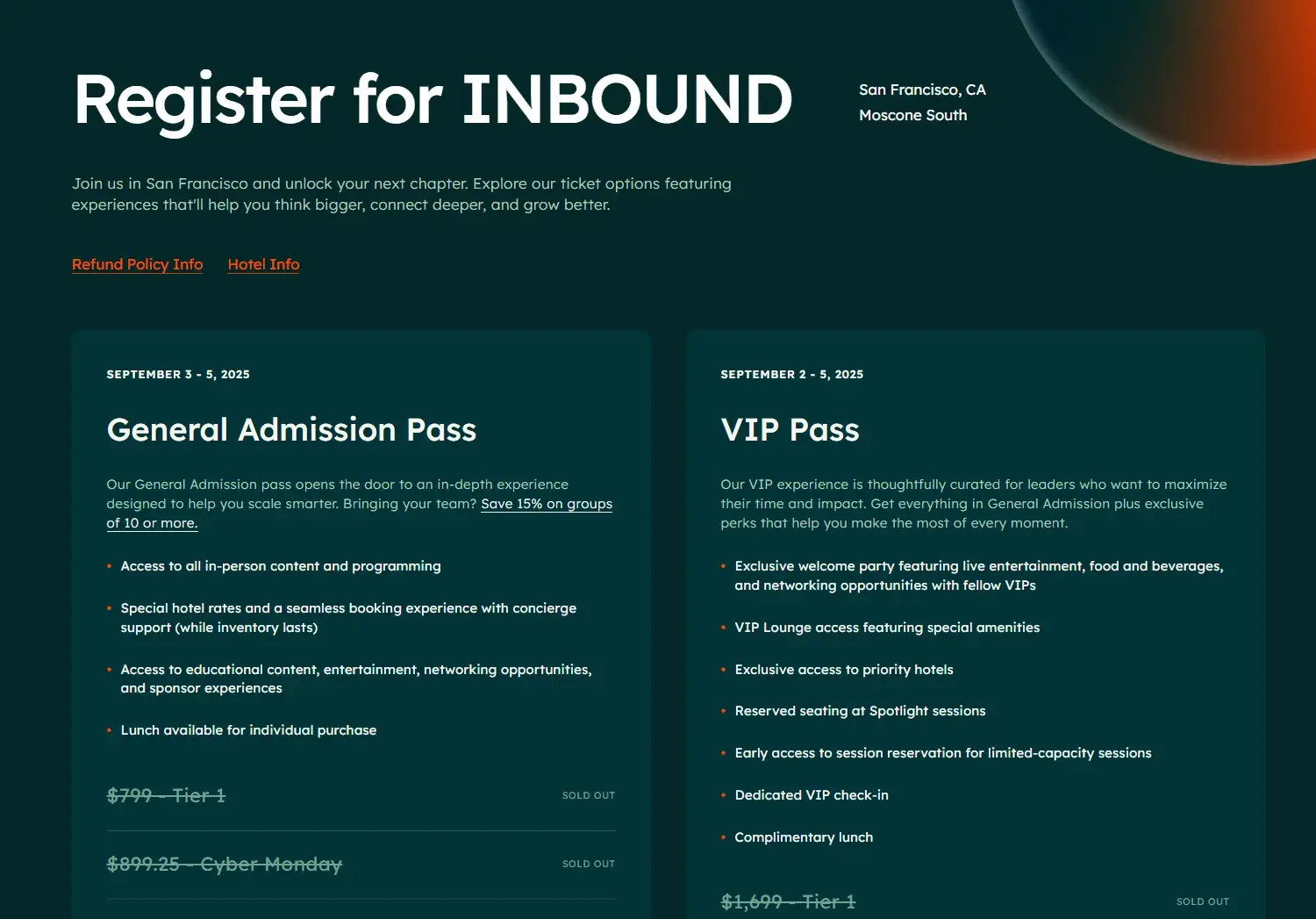
While INBOUND doesn't leave the ultimate ticket price up to its attendees, it does provide a range of tickets from which customers can choose. This allows you to choose what experience you want to have based on how they value the event.
INBOUND tickets change with time, however, meaning this pricing strategy could also be considered dynamic (like the Cubs example above). As the INBOUND event gets closer, tickets tend to rise in price.
What I like: The two ticket options — general admission and VIP — allow customers to choose the experience they are willing to pay for.
8. Bundle Pricing: Adobe Creative Cloud
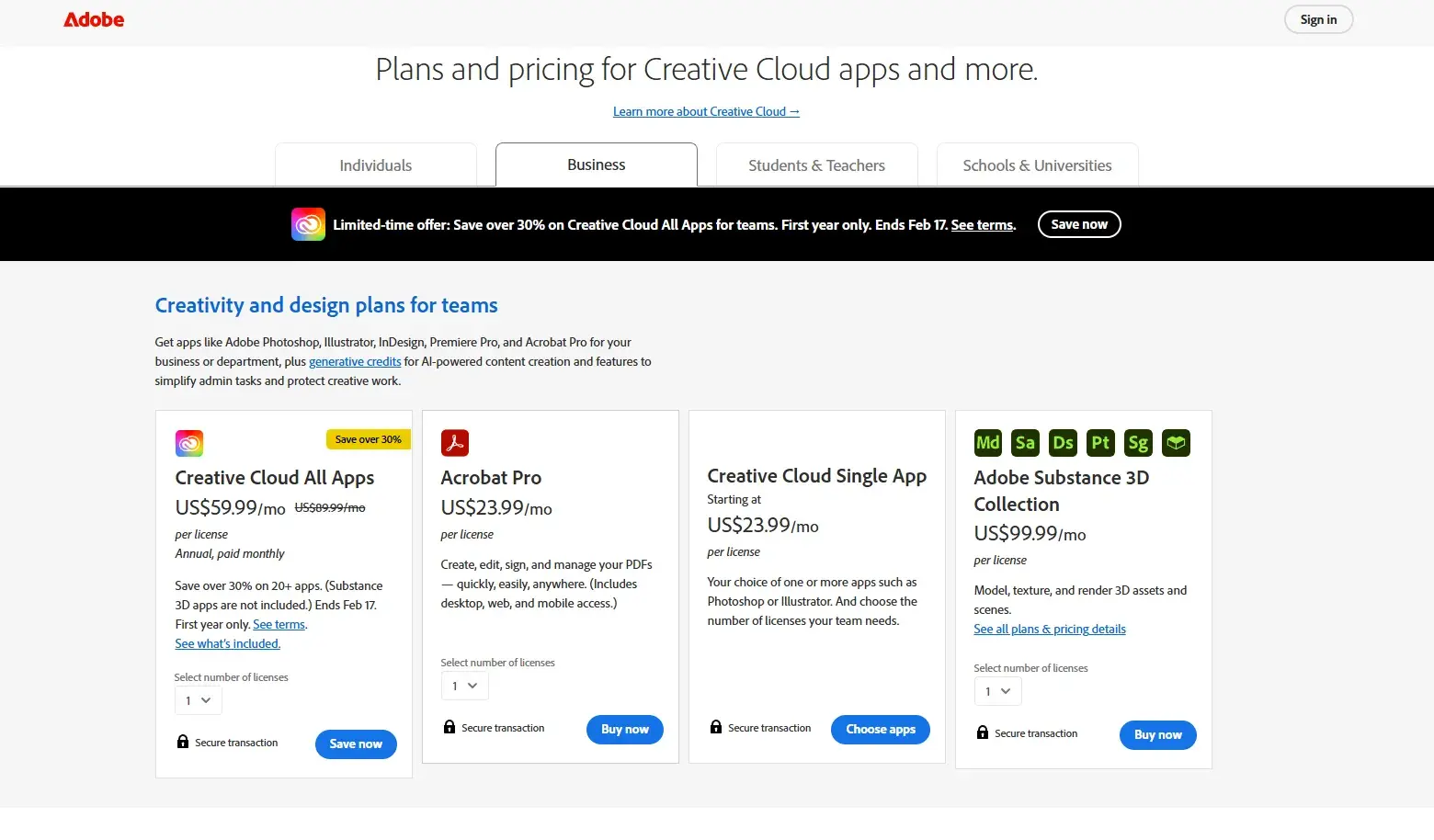
I like bundle pricing, especially for big projects. When building my website, I found Adobe Creative Cloud’s bundle pricing perfect. This strategy offers a suite of tools at a single price, making it more manageable and cost-effective.
Adobe Creative Cloud effectively combines multiple services into one package to enhance its value proposition and simplify purchasing decisions.
Best for: Businesses that offer a variety of related products/services can benefit from bundling to upsell and cross-sell their customers.
9. Geographic Pricing: Gasoline
Gasoline is notorious for having a wide range of prices around the world, but even within the United States, prices can vary by several dollars depending on the state you live in.
In California, for example, gas costs around $4.50 per gallon. Gas prices in Indiana, meanwhile, are just under $3.00 per gallon. State laws, environmental factors, and production costs all influence the price of gasoline, which causes this geographic disparity in price.
Pro tip: If you sell in multiple regions, be mindful of different factors that could affect the local markets and modify your prices accordingly.
How to Create a Pricing Strategy
Step 1: Evaluate pricing potential.
To create a pricing strategy, you need to understand your product’s unique selling points (USPs).
These are the features or benefits that make your product stand out from competitors. Identifying and articulating these USPs helps in justifying a higher price point.
Next, gauge customer perception of your USPs. Conduct surveys, focus groups, or interviews to learn how potential customers perceive the value of your product or service.
Understand what features they value the most and how much they are willing to pay for them. This information is crucial in setting a price that aligns with customer expectations.
Finally, assess market demand. I recommend using market research tools to analyze the demand for your product. Look at trends, market size, and growth potential. High demand can often support higher pricing, while lower demand might require competitive pricing to attract customers.
Step 2: Research your target market.
Understanding your target market is essential for setting the right price. Research potential customers’ age, gender, income level, and other relevant characteristics. Understanding these characteristics helps tailor your pricing to their financial capabilities and preferences.
In my experience, knowing what motivates your customers and their buying behaviors can provide insights into how much they are willing to spend and what they value most in a product or service.
Once you have enough data, divide your market into segments based on demographics, psychographics, and behaviors. This will help you tailor your pricing strategy to your market needs.
Step 3: Research competitor pricing.
Understanding how competitors price their products helps you make informed decisions to enhance competitiveness and profitability.
You’ll have to decide between two main choices when you see the price difference for the same product or service:
- Beat your competitors’ prices. If a competitor is charging more for the same offering as your brand, then make the price more affordable.
- Beat your competitors’ value. Also known as value-based pricing, you can potentially price your offering higher than your competitors if the value provided to the customer is greater.
To see the competition’s full product or service offering, conduct a full competitive analysis. Collect data on their pricing structures, including base prices, discounts, and special offers. Analyze the value they provide at these prices, such as product quality, customer service, and additional features.
Compare this with your offerings to understand your position. This will help you to identify gaps or opportunities to differentiate your pricing.
Step 4: Analyze historical data.
Analyzing historical data provides insights into past performance and helps predict future trends.
Start by reviewing your sales data to identify patterns, such as peak selling periods and successful price points.
Also, assess how market changes, like economic shifts or new competitors, have impacted sales. This historical perspective allows you to make data-driven decisions, anticipate customer reactions, and adjust prices strategically.
Step 5: Strike a balance between value and business goals.
A winning pricing strategy is all about balance. Focus too much on customer expectations and you may under-price your products or services. Go all-in on making a profit and you may miss the mark on keeping customers happy.
The ideal pricing strategy should help you achieve at least two of these objectives simultaneously:
- Increased profitability.
- Improved cash flow.
- Enhanced market penetration.
- Expanded market share.
- Increased lead conversion.
Step 6: Choose a pricing strategy.
After carefully considering all the factors discussed, it's time to select the optimal pricing model for your business. The ideal strategy should:
- Accurately reflect the value you deliver to customers.
- Help you achieve your revenue goals.
- Maintain competitiveness in the market.
- Align with your overall business strategy and positioning.
- Support your long-term objectives.
Remember that pricing is not a one-time decision. Stay flexible and be prepared to make adjustments as market conditions shift and customer perceptions change over time.
Step 7: Test and refine.
Your pricing strategy should be flexible. I recommend regularly reviewing and refining it through continuous experimentation and A/B testing.
For instance, you can test different price points over a set period to evaluate their impact on sales and profitability. This way, you can make data-driven adjustments to optimize your pricing strategy.
This will ensure it remains effective and aligned with both market conditions and customer expectations.
Pricing Models
While your company’s pricing strategy may determine how you set prices for offerings overall, pricing models help you implement the broader strategy.
Below, I will take you through some popular pricing models:
1. Freemium Pricing
A combination of the words “free” and “premium,” freemium pricing is when companies offer a basic version of their product, hoping that users will eventually pay to upgrade or access more features.
Freemium pricing is commonly used by SaaS and other software companies. They choose this model because free trials and limited memberships offer a peek into a software’s full functionality — and also build trust with a potential customer before purchase.
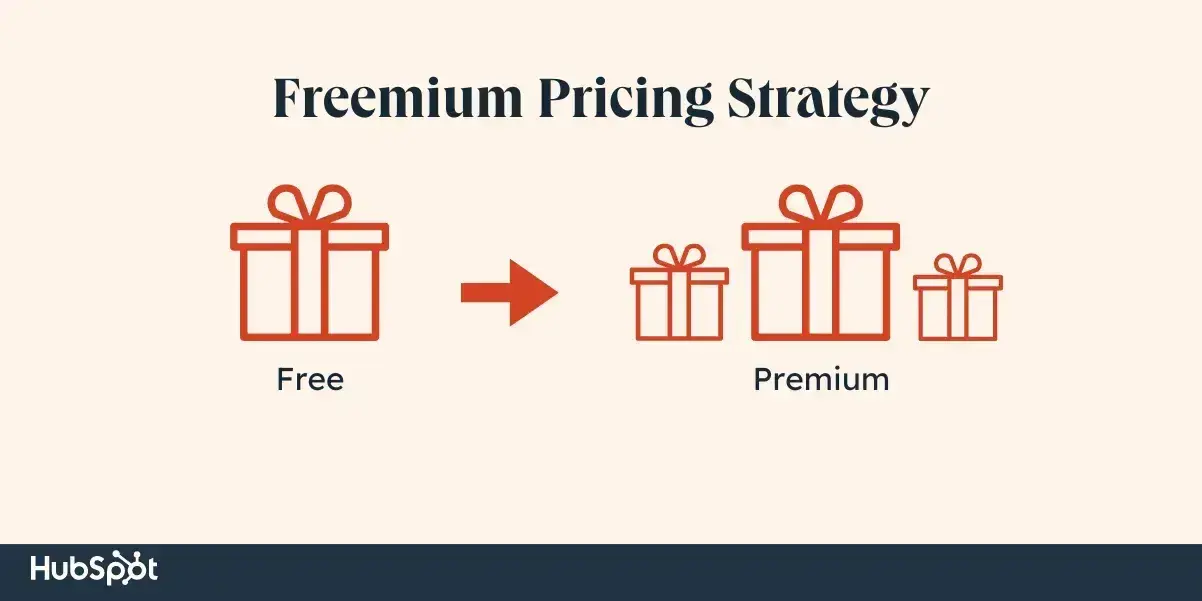
With freemium, a company’s prices must be a function of the perceived value of their products.
For example, companies that offer a free version of their software can’t ask users to pay $100 to transition to the paid version. Prices must present a low barrier to entry and grow incrementally as customers are offered more features and benefits.
An example of a brand using this model is Dropbox. It attracts a large user base and builds brand awareness through its robust free tier. As users grow increasingly reliant on the service and need additional storage or features, their likelihood of upgrading to paid plans increases.
When to use: Use freemium pricing for services or as-a-service products that benefit from a “try before you buy” approach to creating customer interest.
Freemium Pricing in Marketing
Freemium pricing may not make your business a lot of money on the initial acquisition of a customer, but it gives you access to the customer, which is just as valuable. With access to their email inboxes, phone numbers, and any other contact information you gather in exchange for the free product, you can nurture the customer into a brand-loyal advocate with a worthwhile LTV.
2. Premium Pricing
Premium pricing, also known as prestige pricing or luxury pricing, is a strategy where a product is priced higher than competitors to create an impression of superior quality and exclusivity.
This model leverages the perception that higher prices signify better quality, drawing in consumers who are willing to pay more for what they see as a premium product or service. The strategy involves marketing the product as having limited availability or unique features that competitors cannot easily replicate.
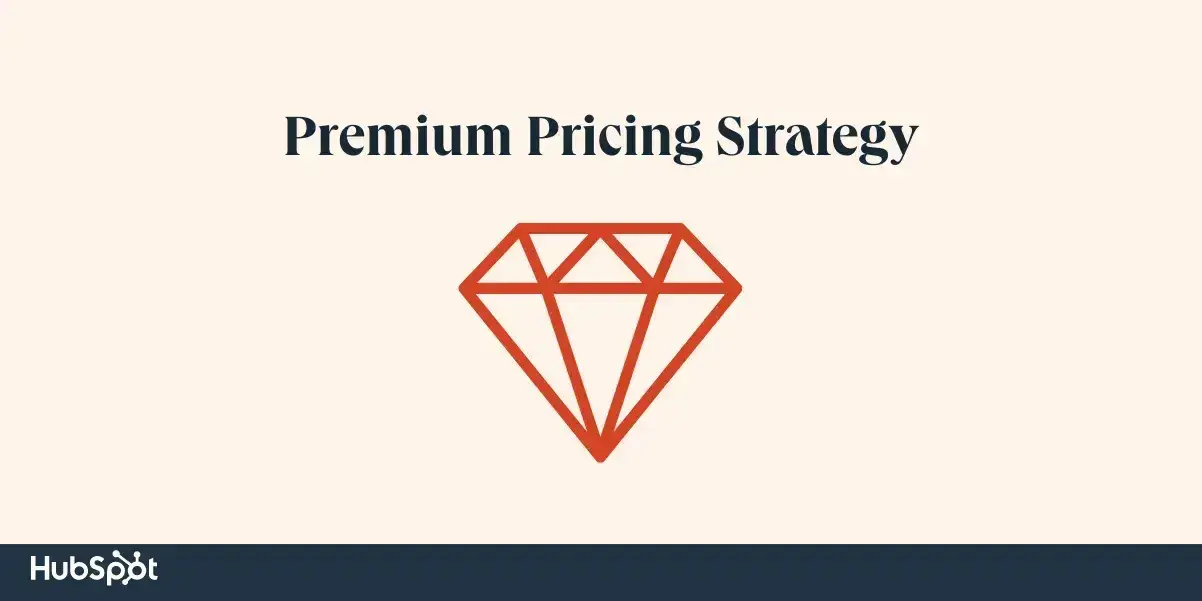
Prestige pricing is a direct function of brand awareness and brand perception. Brands that apply this pricing method are known for providing value and status through their products — which is why they’re priced higher than other competitors.
For example, Rolex sets its prices much higher than other watchmakers. It relies on a strong reputation for exceptional craftsmanship and exclusivity. Rolex’s brand image and perceived quality attract customers who value prestige and superior workmanship.
When to use: Use a premium pricing model when you have the brand perception to back it up. In practice, this means carrying out in-depth consumer research before raising prices — if you miss the mark on customers’ perception of your brand, your higher prices will fall flat.
Premium Pricing in Marketing
Premium pricing is quite dependent upon the perception of your product within the market. There are a few ways to market your product in order to influence a premium perception of it including using influencers, controlling supply, and driving up demand.
3. Hourly Pricing
Hourly pricing, also known as rate-based pricing, is commonly used by consultants, freelancers, contractors, and other individuals or laborers who provide business services.
Hourly pricing is essentially trading time for money. Some clients are hesitant to honor this pricing strategy as it can reward labor instead of efficiency.
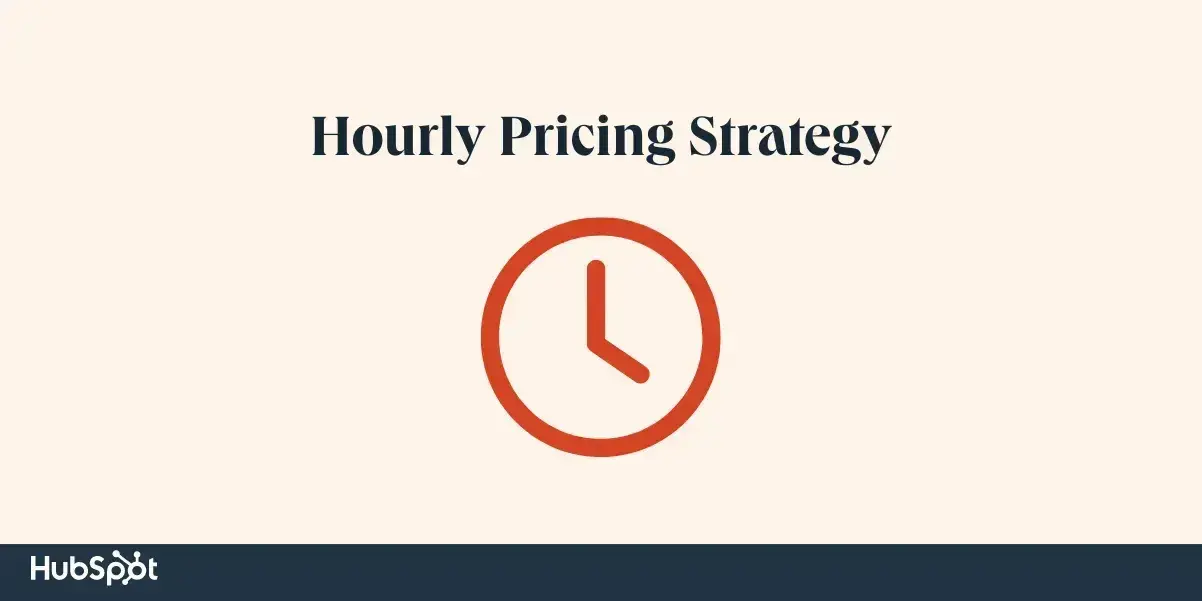
When to use: Use hourly pricing if you regularly take on short-term projects that let customers access your services on-demand.
Hourly Pricing in Marketing
For businesses that handle quick, high-volume projects, hourly pricing can incentivize customers to choose your services. Breaking down prices into hourly chunks allows customers to decide based on a lower price point, rather than needing to allocate a larger budget for an expensive project-based commitment.
4. Bundle Pricing
Bundle pricing is when you offer (or “bundle”) two or more complementary products or services together and sell them for a single price. You may choose to sell your bundled products or services only as part of a bundle or sell them as both components of bundles and individual products.
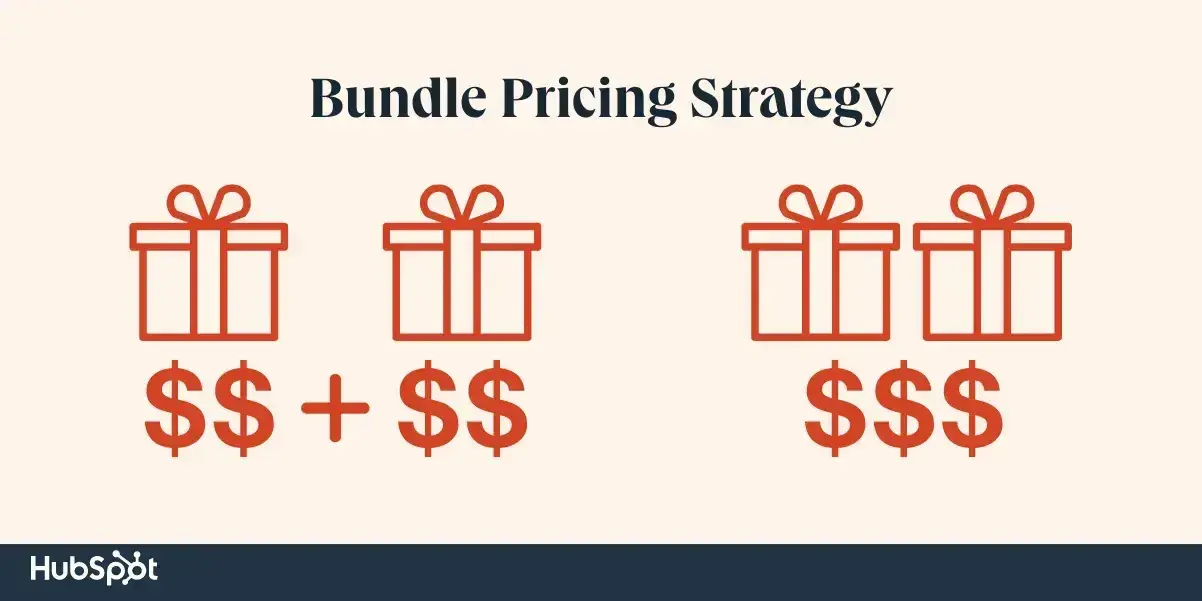
For example, Amazon frequently offers bundle deals where customers can buy related items together at a discount. Customers might buy a camera with accessories like lenses, tripods, and memory cards at a bundled price.
When to use: Use bundle pricing if you sell products that are naturally used in tandem or by pairing products with additional services, such as warranties on electronic devices.
Bundle Pricing in Marketing
In my experience, marketing bundle deals can help you sell more products than you would otherwise sell individually. It’s a smart way to upsell and cross-sell your offerings in a way that is beneficial for the customer and your revenue goals.
5. Project-Based Pricing
Project-based pricing is the opposite of hourly pricing — this approach charges a flat fee per project instead of a direct exchange of money for time. It is also used by consultants, freelancers, contractors, and other individuals or laborers who provide business services.
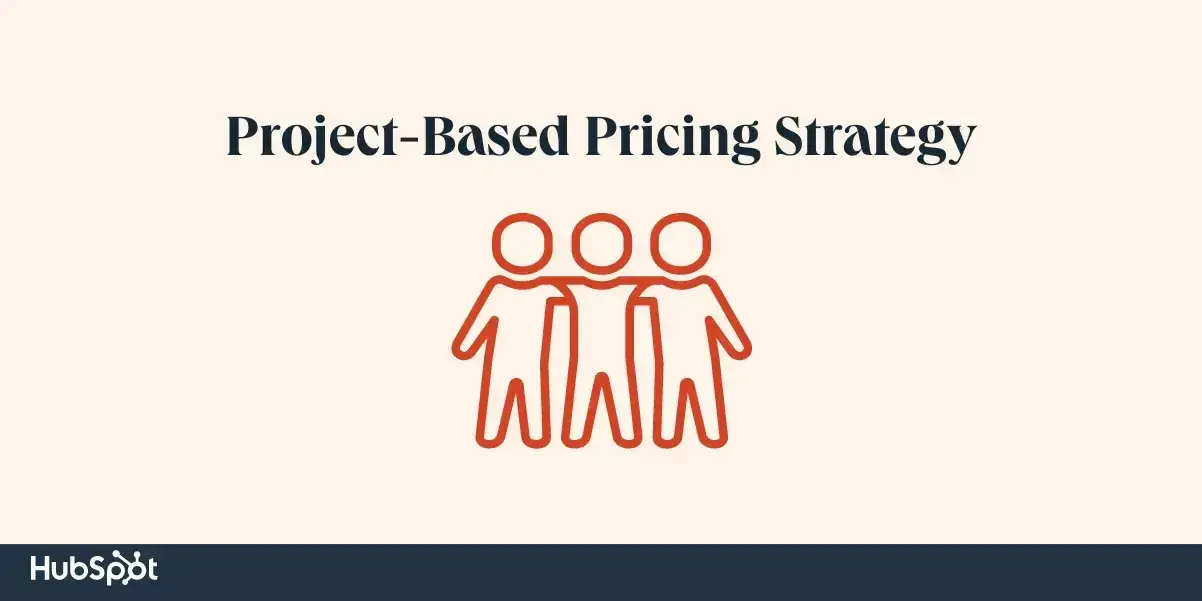
Project-based pricing may be estimated based on the value of the project deliverables. Those who choose this pricing model may also create a flat fee from the estimated time of the project.
When to use: Use project-based pricing to help onboard customers who have fixed budgets but are unsure of total costs. The caveat? Make sure you have a clear scope of work before getting started.
Project-Based Pricing in Marketing
Highlighting the benefits of working with your business can make project-based pricing more attractive. Although the cost may be high, the one-time investment is worthwhile. Clients will appreciate knowing they can work with you until the project is completed, rather than being limited by a set number of hours.
6. Subscription Pricing
Subscription pricing is a common pricing model at SaaS companies, online retailers, and even agencies that offer subscription packages for their services.
Whether you offer flat-rate subscriptions or tiered subscriptions, the benefits of this model are endless. For one, you have all but guaranteed monthly recurring revenue (MRR) and yearly recurring revenue. That makes it simpler to calculate your profits on a monthly basis. It also often leads to higher customer lifetime values.
The one thing to be wary of when it comes to subscription pricing is the high potential for customer churn. People cancel subscriptions all the time, so it's essential to have a customer retention strategy in place to ensure clients keep their subscriptions active.
When to use: Use subscription pricing if you sell services that are billed month-to-month or for products that customers need delivered on a recurring schedule.
Subscription Pricing in Marketing
When marketing your subscription products, I suggest you create buyer personas for each tier. That way, you know which features to include and what will appeal to each buyer. A general subscription that appeals to everyone won't pull in anyone.
Even Amazon, which offers flat-rate pricing for its Prime subscription, includes a membership for students. That allows them to market the original Prime more effectively by creating a sense of differentiation.
Now that we’ve gone over how to create a pricing strategy and explored some of the most common pricing models, let’s discuss applying these steps to different businesses and industries.
Pricing Models Based on Industry or Business
Not every pricing strategy is applicable to every business. Some strategies are better suited for physical products, whereas others work best for SaaS companies. Here are examples of some common pricing models based on industry and business.
Product Pricing Model
Unlike digital products or services, physical products incur hard costs (like shipping, production, and storage) that can influence pricing. A product pricing strategy should consider these costs and set a price that maximizes profit, supports research and development, and stands up against competitors.
Pro tip: I recommend using these pricing strategies when pricing physical products: cost-plus pricing, competitive pricing, prestige pricing, and value-based pricing.
Digital Product Pricing Model
Digital products, like software, online courses, and digital books, require a different approach to pricing because there’s no tangible offering or unit economics (production cost) involved. Instead, prices should reflect your brand, industry, and overall value of your product.
Pro tip: I recommend using these pricing strategies when pricing digital products: competition-based pricing, freemium pricing, and value-based pricing.
Restaurant Pricing Model
Restaurant pricing is unique in that physical costs, overhead costs, and service costs are all involved. You must also consider your customer base, overall market trends for your location and cuisine, and the cost of food — as all of these can fluctuate.
Pro tip: I recommend using these pricing strategies when pricing at restaurants: cost-plus pricing, premium pricing, and value-based pricing.
Event Pricing Model
Events can’t be accurately measured by production cost. Instead, event value is determined by the cost of marketing and organizing the event, along with the speakers, entertainers, networking, and the overall experience. As a result, the ticket prices should reflect all these factors.
Pro tip: I recommend using these pricing strategies when pricing live events: competition-based pricing, dynamic pricing, and value-based pricing.
Services Pricing Model
Business services can be hard to price due to their intangibility and lack of direct production cost. Much of the service value comes from the service provider’s ability to deliver and the assumed caliber of their work. Freelancers and contractors, in particular, must adhere to a services pricing strategy.
Pro tip: I recommend using these pricing strategies when pricing services: hourly pricing, project-based pricing, and value-based pricing.
Nonprofit Pricing Model
Nonprofits need pricing strategies, too — a pricing strategy can help nonprofits optimize all processes so they’re successful over an extended period.
A nonprofit pricing strategy should consider current spending and expenses, the breakeven number for their operation, the ideal profit margin, and how the strategy will be communicated to volunteers, licensees, and anyone else who needs to be informed. A nonprofit pricing strategy is unique because it often calls for a combination of elements that come from a few pricing strategies.
Pro tip: I recommend using these pricing strategies when pricing for nonprofits: competitive pricing, cost-plus pricing, demand pricing, and hourly pricing.
Education Pricing Model
Education encompasses a wide range of costs that are important to consider depending on the level of education, private or public education, and education program/discipline.
Specific costs to consider in an education pricing strategy are tuition, scholarships, and additional fees (labs, books, housing, meals, etc.). Other important factors to note are competition among similar schools, demand (number of student applications), number and costs of professors/ teachers, and attendance rates.
Pro tip: I recommend using these pricing strategies when pricing education: competitive pricing, cost-based pricing, and premium pricing.
Real Estate Pricing Model
Real estate encompasses home value estimates, market competition, housing demand, and cost of living. There are other factors that play a role in real estate pricing models including potential bidding wars, housing estimates and benchmarks (which are available through real estate agents but also through free online resources like Zillow), and seasonal shifts in the real estate market.
Pro tip: I recommend using these pricing strategies when pricing real estate: competitive pricing, dynamic pricing, premium pricing, and value-based pricing.
Agency Pricing Model
Agency pricing models impact your profitability, retention rates, customer happiness, and how you market and sell your agency. When developing and evolving your agency’s pricing model, it’s important to take into consideration different ways to optimize it so you can determine the best way to boost the business's profits.
Pro tip: I recommend using these pricing strategies when pricing agencies: hourly pricing, project-based pricing, and value-based pricing.
Manufacturing Pricing Model
The manufacturing industry is complex — there are several moving parts, and your manufacturing pricing model is no different. Consider product evolution, demand, production cost, sale price, unit sales volume, and any other costs related to your process and product.
Pro tip: I recommend using these pricing strategies when pricing manufacturing: competitive pricing, cost-plus pricing, and value-based pricing.
Ecommerce Pricing Model
Ecommerce pricing models are how you determine the price at which you’ll sell your online products and what it’ll cost you to do so. This means that you must think about what your customers are willing to pay for your online products and what those products cost you to purchase and/or create.
You might also factor in your online campaigns to promote these products, as well as how easy it is for your customers to find products similar to yours on the ecommerce sites of your competitors.
Pro tip: I recommend using these pricing strategies for ecommerce: competitive pricing, cost-based pricing, dynamic pricing, freemium pricing, penetration pricing, and value-based pricing.
Get Your Pricing Strategy Right
It’s easy to get overwhelmed by the sheer number of pricing strategy factors and components. From competitors to production costs, customer demand to industry needs, profit margins to making a profit, the list is endless. Thankfully, you don’t have to master everything all at once.
Instead, start small. Calculate your COGS, determine your ideal profit margin, carry out some customer research, and determine what’s most important for your business. Equipped with this information, you can find a pricing strategy that makes sense and drives revenue.
If there’s one thing I hope you take away from this piece, it’s that creating an effective pricing strategy is an iterative process. You probably won’t find the ideal price point right away. It might take a couple of tries (and lots of research), and that’s OK — slow and steady, not fast and reckless, takes the prize in pricing strategy.
Pricing Strategy


.png)


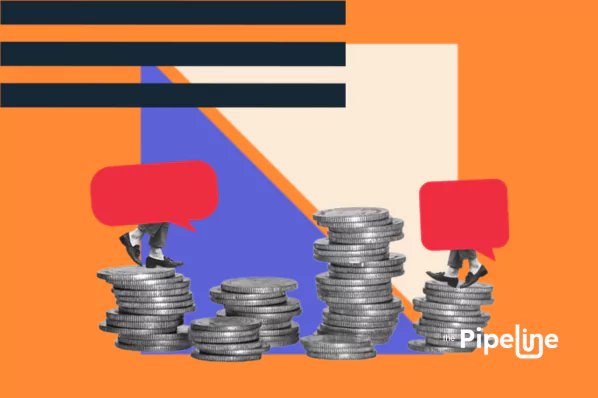

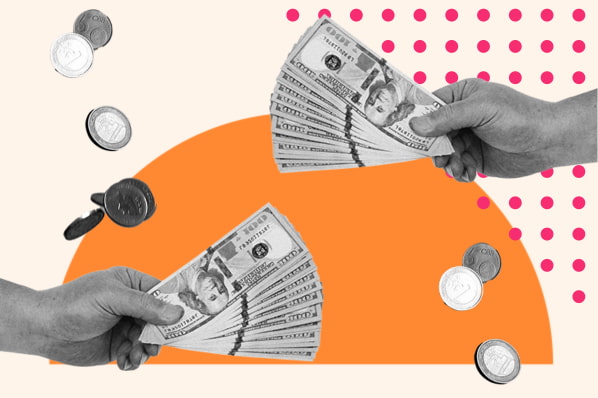
![Price Skimming: All You Need To Know [+ Pricing Calculator]](https://53.fs1.hubspotusercontent-na1.net/hubfs/53/price-skimming-strategy.jpg)

.jpg)
![B2B Pricing Models & Strategies [+ Pros and Cons of Each]](https://53.fs1.hubspotusercontent-na1.net/hubfs/53/b2b-pricing-models-and-strategies.jpg)
